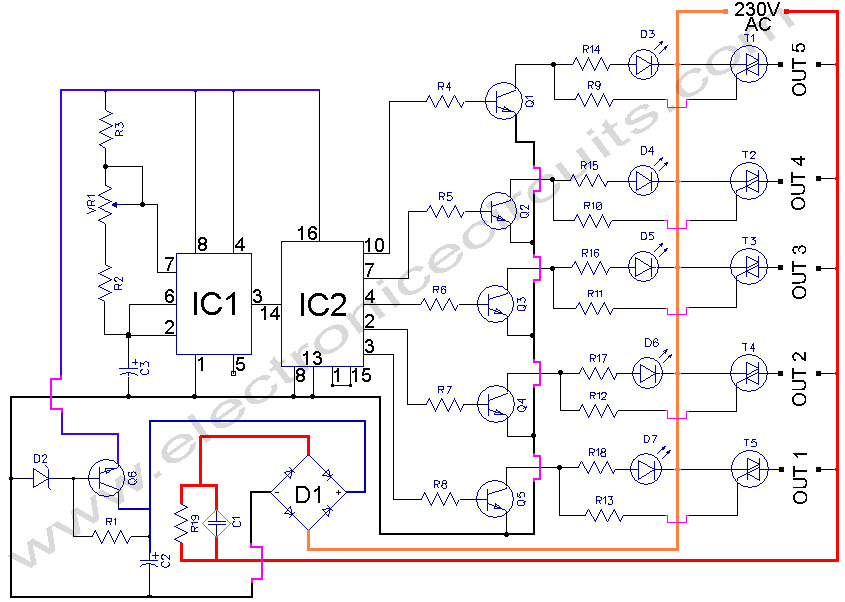
Alarm Sounder For Flex Switch Circuit

This is a cross-sectional diagram of a flex switch. They can be used as pushbuttons or even position sensors. This schematic diagram shows an oscillator, which is used as an alarm sounder, triggered by a flex switch.
The flex switch is a versatile component widely utilized in various applications, acting as both a pushbutton and a position sensor. The cross-sectional diagram illustrates its construction, which typically includes a flexible substrate, conductive traces, and a sensing mechanism. When pressure is applied to the switch, the conductive traces make contact, completing the circuit and allowing current to flow.
In the schematic, the oscillator serves a crucial role as an alarm sounder. It generates a periodic waveform that can be converted into an audible signal. The oscillator circuit may consist of components such as resistors, capacitors, and an integrated timer or microcontroller, which work together to establish the frequency and amplitude of the sound produced.
When the flex switch is actuated, it triggers the oscillator circuit. This activation can be achieved through various methods, such as direct contact or through an intermediary circuit that amplifies the signal from the switch. The output from the oscillator can be connected to a speaker or buzzer, producing an alarm sound that alerts users to specific conditions or events.
Overall, the integration of a flex switch with an oscillator circuit provides an effective solution for applications requiring tactile input and auditory feedback, such as in alarm systems, user interfaces, and interactive devices. The design considerations for such circuits include ensuring reliable contact closure, optimizing the oscillator parameters for desired sound characteristics, and implementing any necessary protective features to enhance durability and performance. This is a cross-sectional diagram of a flex switch. They can be used as pushbutton or even position sensors. This schematic diagram shows an oscillator, which is used as an alarm sounder, triggered by a flex switch. 🔗 External reference
The flex switch is a versatile component widely utilized in various applications, acting as both a pushbutton and a position sensor. The cross-sectional diagram illustrates its construction, which typically includes a flexible substrate, conductive traces, and a sensing mechanism. When pressure is applied to the switch, the conductive traces make contact, completing the circuit and allowing current to flow.
In the schematic, the oscillator serves a crucial role as an alarm sounder. It generates a periodic waveform that can be converted into an audible signal. The oscillator circuit may consist of components such as resistors, capacitors, and an integrated timer or microcontroller, which work together to establish the frequency and amplitude of the sound produced.
When the flex switch is actuated, it triggers the oscillator circuit. This activation can be achieved through various methods, such as direct contact or through an intermediary circuit that amplifies the signal from the switch. The output from the oscillator can be connected to a speaker or buzzer, producing an alarm sound that alerts users to specific conditions or events.
Overall, the integration of a flex switch with an oscillator circuit provides an effective solution for applications requiring tactile input and auditory feedback, such as in alarm systems, user interfaces, and interactive devices. The design considerations for such circuits include ensuring reliable contact closure, optimizing the oscillator parameters for desired sound characteristics, and implementing any necessary protective features to enhance durability and performance. This is a cross-sectional diagram of a flex switch. They can be used as pushbutton or even position sensors. This schematic diagram shows an oscillator, which is used as an alarm sounder, triggered by a flex switch. 🔗 External reference
Warning: include(partials/cookie-banner.php): Failed to open stream: Permission denied in /var/www/html/nextgr/view-circuit.php on line 713
Warning: include(): Failed opening 'partials/cookie-banner.php' for inclusion (include_path='.:/usr/share/php') in /var/www/html/nextgr/view-circuit.php on line 713





